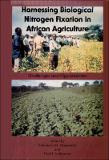| dc.contributor.author | Khasa, P. D. | |
| dc.contributor.author | Bousquet, J. | |
| dc.coverage.spatial | Sub- Saharan Africa. | en |
| dc.date.accessioned | 2015-09-11T14:27:26Z | |
| dc.date.available | 2015-09-11T14:27:26Z | |
| dc.date.issued | 1998 | |
| dc.identifier.citation | Khasa, P. D. and Bousquet, J. (1998) Genetic Improvement of Racosperma spp. for Agroforestry in sub-Saharan African Countries. In: Mpepereki, S.M & Makonese, F.T. (eds.) Harnessing Biological Nitrogen Fixation in African Agriculture: Challenges and Opportunities: Sixth International Conference of the African Association for Biological Nitrogen Fixation, 12-17 September, 1994, Harare, Zimbabwe: selected papers. Mt. Pleasant, Harare: UZ Publications, pp. 247-250. | en |
| dc.identifier.issn | 0-908307-58-6 | |
| dc.identifier.uri | https://opendocs.ids.ac.uk/opendocs/handle/20.500.12413/6971 | |
| dc.description | A book chapter/ conference paper on genetically engineering aggro-forestry in Sub-Saharan Africa. | en |
| dc.description.abstract | Racosperma auriculiformis (formerly Acacia auriculiformis) and R. mangium (formerly Acacia mangium), two woody leguminous plants, have been introduced in many sub-Saharan African countries for reforestation and agroforestry purposes. Nodulation with Rhizobium and vesicular- arbuscular (VA) mycorrhizal associations contribute much to the growth of both species, especially in soils poor in nutrients.
Improved methods of enzyme extraction and horizontal starch gel electrophoresis were developed in order to study the mating system, the genetic diversity and its architecture within and among populations of both species. Analysis of the mating system revealed a predominantly outcrossing mode. The use of allozyme markers showed that populations were found with low apparent inbreeding and that diversity resided predominantly within populations.
Early genecological tests showed that variation in quantitative characters follows patterns of geographic variation for both species. These tests permitted the selection of Papua New Guinea provenances as the most productive and adapted for use in agroforestry. Such a screening was also conducted for rooting ability, for its use in production of monospecific and hybrid varieties. To maximise plant productivity, a two-step selection procedure is suggested, the first step regarding the host plant and the second one the microsymbiont strains. | en |
| dc.language.iso | en | en |
| dc.publisher | University of Zimbabwe (UZ) Publications. (Department of Soil Sciences) | en |
| dc.rights.uri | http://creativecommons.org/licenses/by-nc-nd/3.0/ | en |
| dc.subject | Agriculture | en |
| dc.subject | Environment | en |
| dc.subject | Technology | en |
| dc.title | Genetic Improvement of Racosperma spp. for Agroforestry in sub-Saharan African Countries | en |
| dc.type | Book chapter | en |
| dc.type | Conference paper | en |
| dc.rights.holder | University of Zimbabwe (UZ) | en |


